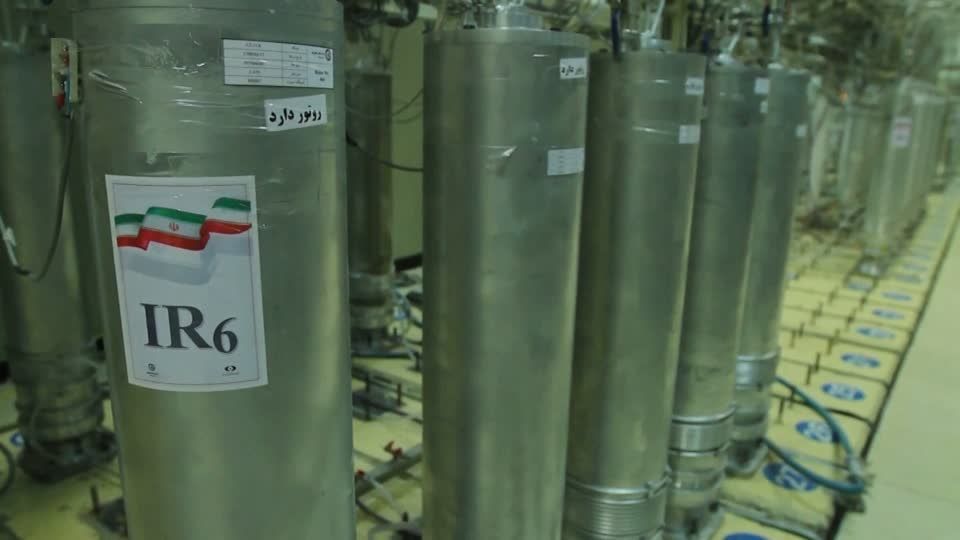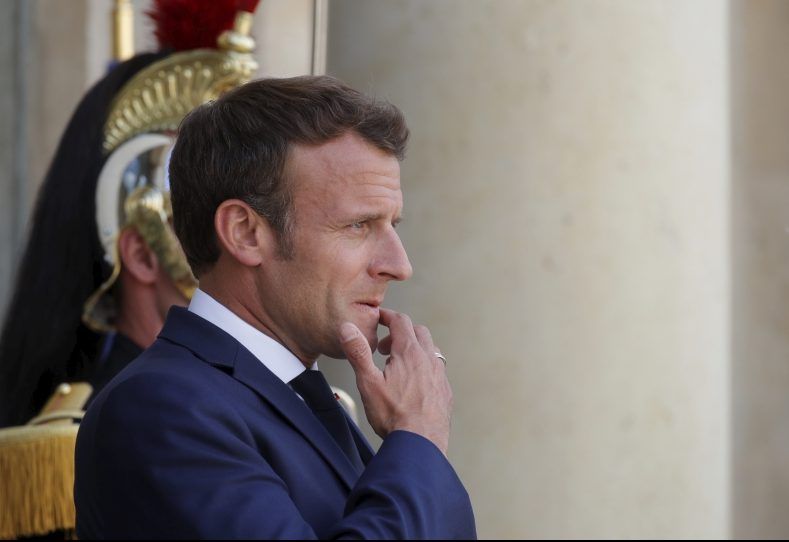By Parisa Hafezi
DUBAI, Nov 6 (Reuters) – Iran has stepped up activity at its underground Fordow nuclear plant, state TV said on Wednesday, a move France said showed for the first time that Tehran explicitly planned to quit a deal with world powers that curbed its disputed nuclear work.
In another development that could also aggravate tensions between Iran and the West, diplomats said Iran briefly held an inspector for the U.N. nuclear watchdog and seized her travel documents, with some describing this as harassment.
Iran said the inspector was prevented from entering the Natanz facility because of a concern she might be carrying “suspicious material”, the semi-official Fars news agency reported. It said screening equipment at Natanz flashed a warning sign when the inspector passed through so her equipment was searched, she was denied entry and the International Atomic Energy Agency was subsequently informed. The incident involving an IAEA inspector appeared to be the first of its kind since Tehran’s landmark deal with major powers was struck in 2015, imposing restraints on its uranium enrichment programme in return for the lifting of international sanctions.
Iran‘s decision to inject uranium gas into centrifuges at Fordow, a move that further distances Iran from the accord, was described by Moscow as extremely alarming. Iran once hid Fordow from the IAEA until its exposure by Western spies in 2009.
“With the presence of inspectors from the International Atomic Energy Agency, Iran started injecting (uranium) gas into centrifuges in Fordow,” TV reported.
A central aim of the agreement was to extend the time the Islamic Republic would need to assemble a nuclear weapon, if it chose to do so, to a year from about 2-3 months. Iran has repeatedly denied any such intention.
The 2015 deal bans Fordow from producing nuclear material. But, with feedstock gas entering its centrifuges, the facility – built inside a mountain – will move from the permitted status of research plant to being an active nuclear site.
A spokesman for Iran‘s Atomic Energy Organization, Behrouz Kamalvandi, told state TV later that the injection of uranium gas would start at midnight (2030 GMT). He said the centrifuges there would enrich uranium up to 4.5% fissile purity. Ninety percent purity is required for bomb-grade fuel.
President Hassan Rouhani, an architect of the 2015 deal, blamed Washington for Iran‘s rolling back of its commitments, saying Fordow would soon fully resume uranium enrichment work.
“Iran‘s fourth step in reducing its commitments under the JCPOA (the 2015 nuclear deal) by injecting gas to 1,044 centrifuges begins today. Thanks to U.S. policy and its allies, Fordow will soon be back to full operation,” Rouhani tweeted.
Last year, U.S. President Donald Trump exited the deal, saying it was flawed to Iran‘s advantage. Washington has since renewed and intensified sanctions on Iran, slashing its economically vital crude oil sales by more than 80%.

“PROFOUND SHIFT”
Speaking in China, French President Emmanuel Macron called Iran‘s latest move “grave”, saying it explicitly signalled Iran‘s intent for the first time to leave the deal.
“I think that for the first time, Iran has decided in an explicit and blunt manner to leave the JCPOA, which marks a profound shift,” said Macron, who has been at the forefront of efforts by European signatories to salvage the deal after the United States withdrew.
When asked whether Paris would support triggering a dispute mechanism enshrined in the deal, Macron said technical and ministerial meetings would be held to discuss the wider implications of Iran‘s actions.

In Moscow, Russian Foreign Minister Sergei Lavrov said events unfolding around the nuclear deal were deeply disturbing and called on Iran to stick to the terms of the deal.
But he added that Moscow understood why Tehran was cutting back on its commitments, and blamed the situation on the U.S. decision to pull out of the pact.
Responding to Washington’s “maximum pressure” policy, Iran has bypassed the restrictions of the deal step-by-step – including by breaching both its cap on stockpiled enriched uranium and on the fissile level of enrichment.
[aesop_image img=”https://kayhanlife.com/wp-content/uploads/2019/05/zarif-lavrov-93920.jpeg” panorama=”off” credit=”FILE PHOTO: Russia’s Foreign Minister Sergei Lavrov (R) and his Iranian counterpart Mohammad Javad Zarif enter a hall during a meeting in Moscow, Russia. REUTERS/Sergei Karpukhin” align=”center” lightbox=”off” captionsrc=”custom” captionposition=”left” revealfx=”off” overlay_revealfx=”off”]
SPEEDING UP ENRICHMENT
Iranian authorities said on Tuesday that Tehran will enrich uranium to 5% at Fordow, which will further complicate the chances of saving an accord that European powers, Russia and the European Union have urged Iran to respect.
The agreement capped the level of purity to which Iran can enrich uranium at 3.67% – suitable for civilian power generation and far below the 90% threshold of nuclear weapons grade.
On Monday, Iran said it had accelerated enrichment by doubling the number of advanced IR-6 centrifuges in operation, adding that it was working on “a prototype called the IR-9, which works 50 times faster than IR-1 centrifuges”.
In Vienna, the U.N. nuclear watchdog said IAEA inspectors remained on the ground in Iran and would report back on relevant activities.
The incident involving the IAEA inspector is due to be discussed at a special meeting of the agency’s 35-nation Board of Governors on Thursday. “The agency wants to show how seriously they are taking this. It is a potentially damaging precedent,” one Western official said.
(Additional reporting by Marine Pennetier, Maria Kiselyova, Francois Murphy, John Irish and Babak Dehghanpisheh Writing by Parisa Hafezi Editing by William Maclean and Mark Heinrich)

